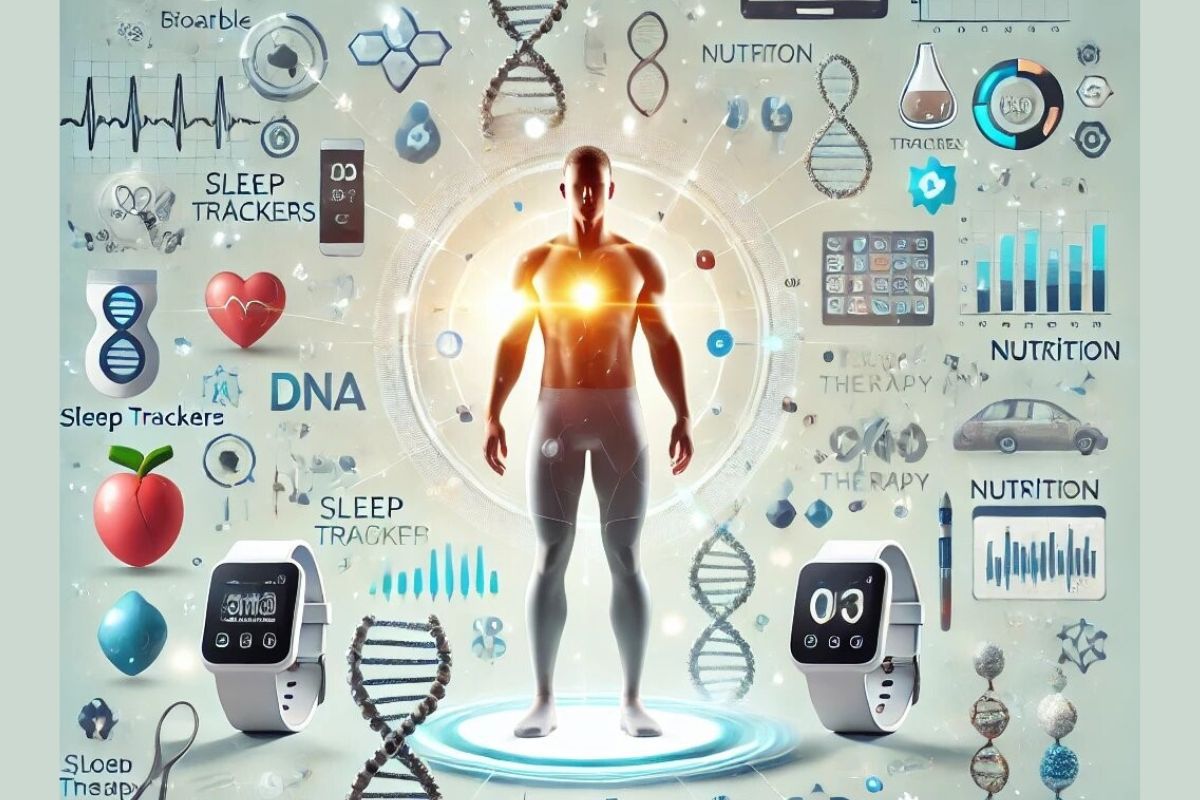Biohacking for Weight Loss: A Science-Backed Guide

Recently, overeating and being overweight have become major health problems around the world. About 2.5 billion people around the world were overweight or obese in 2022, according to the World Health Organisation. Of these, 890 million were considered obese. Approximately 43% of people around the world are overweight, and 16% meet the criteria for obesity.
The number of obese people around the world has more than doubled since 1990, which is highly concerning. Similar worries exist in the United States, where new data from the CDC show that around 40% of people are now clinically obese.
Growing numbers of people are overweight or obese, so many are looking to “biohacking” to improve their bodies and lose weight. Biohacking is the practice of slowly and purposefully changing your food and way of life, usually based on science and data, in order to “hack” your biology and get better health results.
For metabolic health and Biohacking strategies for weight loss techniques include: hormone optimisation, nutrient timing, sleep control, cold exposure, and using technology-based tools.
Table of Contents
ToggleIntermittent Fasting
One very common biohack for losing weight is intermittent fasting (IF). Periods of eating and periods of fasting (no calories) are alternated. Regular routines include the 16/8 method, which involves fasting for 16 hours every day and eating within an 8-hour window, and the 5:2 diet, which involves eating normally 5 days a week and very few calories on 2 days.
At the end of a long fast, the body runs out of energy from food and starts using fat stores as fuel. Slowly losing fat while keeping lean muscle can happen with this hormonal switch, especially if you are not malnourished while fasting.
Hormone Optimization
By knowing and controlling hormonal signals, we can make our bodies more fat-burning and fat-resistant. These are some of the main hormones that affect weight, along with good ways to change them:
- Insulin: To help cells take in glucose (sugar) from the bloodstream, the pancreas releases insulin. High insulin levels can make you gain weight, but they are necessary for controlling blood sugar. Diabetes happens because insulin not only takes glucose into cells but also tells the body to store energy by doing things like turning extra calories into fat.
- Leptin: The “satiety hormone” is made by fat cells. Increased body fat raises leptin levels, which usually tells the brain to cut down on food intake and speed up the metabolism. In a healthy, lean body, leptin helps keep weight from piling on by diminishing hunger as fat stores increase. Although a lot of obese people develop leptin resistance, which means their bodies make a lot of leptin but their brains don’t respond to it properly.
- Ghrelin: Unlike leptin, ghrelin is often called the “hunger hormone.” A rise in this hormone happens when we haven’t eaten, making us hungry and wanting to find food. Higher amounts of ghrelin happen naturally before meals and lower levels afterward. Gihrelin can make it hard to lose weight because when you cut calories or lose body fat, your body makes more ghrelin as a defence strategy, which makes you hungry.
- Cortisol: In reaction to stress, the adrenal glands make cortisol, a steroid hormone. Rising and falling levels of cortisol are normal and even good for us. It helps us get ready for “fight or flight” situations by releasing energy. Cortisol levels that stay high for a long time can cause problems. This could be because of ongoing mental worry or irregular sleep patterns. An increased hunger and a tendency to store fat around the middle can be caused by high cortisol levels.
- Thyroid Hormones: Hormones (mainly T3 and T4) control the body’s basal metabolic rate, which is how fast it burns energy when it’s not doing anything. Low amounts of thyroid hormones, like in hypothyroidism, can slow down the metabolism, making it easier to gain weight or have trouble losing it.
Nutrient Timing and Meal Scheduling
Optimising metabolism, energy levels, and healing is the goal of nutrient timing, which means matching the amount of food you eat with your body’s natural rhythms and needs. Nutrient timing is important for weight loss and metabolic health because it involves aligning our circadian cycle (eating with our body clock) and strategically distributing macronutrients (protein, carbs, and fats) throughout the day.
Circadian rhythm controls the daily pattern of a person’s metabolism. Responding to light and other signals, our hormones, enzymes, and even how well we digest food change throughout the day. The practice of “chrononutrition,” or eating in time with your body’s internal clock, may help you control your weight. Basically, this means eating more calories earlier in the day and staying away from big meals late at night.
Sleep Regulation
It might not sound as cool as gadgets or special diets, but improving your sleep is a secret tool for losing weight and keeping your metabolism healthy. Chronic sleep deprivation is fairly common, and modern life often makes it hard to get enough sleep. Skimping on sleep can ruin even the best diet and exercise plans by messing up important metabolic and chemical processes.
An hunger control system is one of the main links between sleep and weight.
The hormones leptin and ghrelin are affected by sleep. Earlier, we talked about how leptin, which comes from fat cells, tells the brain that you are full, and ghrelin, which comes from the stomach, tells the brain that you are hungry. Leptin levels are higher (which controls hunger) and ghrelin levels are lower when we are well-rested. But this balance tips off the wrong way when we don’t get enough sleep regularly.
Insulin sensitivity and blood sugar balance are also affected by not getting enough sleep. Diabetes can happen when your cells are insulin resistant, which means they don’t respond as well to insulin. This can translate to higher blood glucose levels. This can lead to more fat storage and a higher chance of getting type 2 diabetes over time.
Cold Exposure (Thermogenesis)
Taking cold showers or baths, lowering the thermostat, or spending time outside in cold weather are all examples of this approach. Research on using cold to lose weight is based on brown adipose tissue (BAT), or brown fat, and how the body reacts to cold.
Burning calories to make heat and keep us warm is what brown fat does best. Although shaking makes muscles work, the body also uses brown fat as a furnace to make more heat in a process called non-shivering thermogenesis when it gets cold.
Technology-Driven Tools
Wearable fitness trackers, smartphone apps, and smart scales are all examples of tech tools that can help you lose weight by giving you data and personalised input.
- Wearable Fitness Trackers: These track things like heart rate, steps taken, exercise level, sleep quality, and sometimes even guesses of calories burned. Tracking your daily activity makes you more active by pushing you to do things like reach a 10,000-step goal or get up and move around after sitting for a long time.
- Mobile apps for dieting and fasting: Eating less is often linked to keeping a food journal. You might find secret sources of extra calories or rest assured that you’re meeting a healthy goal with these apps. Intake and expenditure can be compared with many of them when they are connected to activity trackers.
- Continuous Glucose Monitors (CGMs): Continuous glucose monitors (CGMs) are more advanced biohacks. They are wearable devices that constantly check your blood sugar throughout the day. Diabetes patients usually use them, but recently, people without diabetes have become interested in using them to lose weight and speed up their metabolism. As a result, big jumps in blood sugar (and insulin) after meals may be connected to fat storage, while drops in blood sugar may make you hungry.
Conclusion
Utilising biohacking to lose weight is a complete, science-based method for getting rid of extra weight and boosting metabolic health. Combining methods such as intermittent fasting, hormone optimisation, smart nutrient timing, getting enough sleep, being exposed to cold, and using the latest technology, people approach the weight problem from three different areas: living, biology, and behaviour. For example, getting enough sleep balances hunger hormones, which makes it easier to stick to a fasting plan. Using a fitness tracker causes you to be more active, which improves insulin sensitivity and works with a healthy diet. These methods work because they affect all of the body’s control systems.
Published by Carol Jones
My aim is to offer unique, useful, high-quality articles that our readers will love. Whether it is the latest trends, fashion, lifestyle, beauty , technology I offer it all View more posts
Recent Post
Light Touch Clinic Launches Hay Fever Injections







